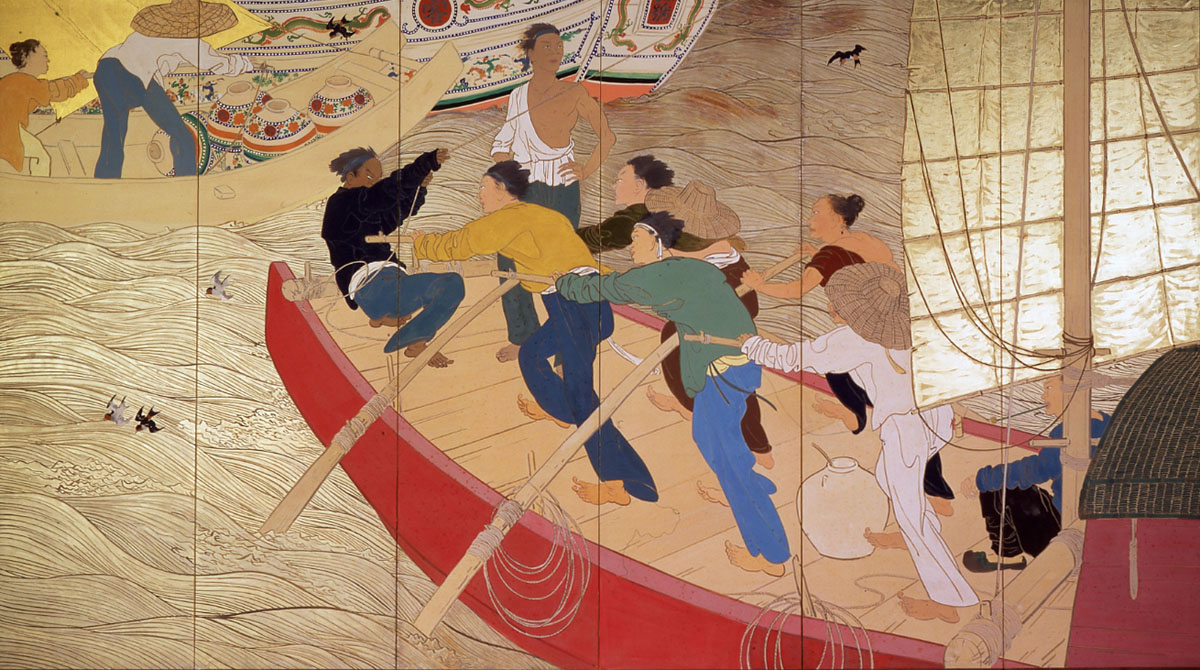From the end of the Edo Period (1603-1867), Japanese art began to shift its fundamental cultural orientation from China to Europe. Kansetsu Hashimoto, however, (1883-1945) initially abjured, and this had much to do with his upbringing
Born in Kobe, Hyogo Prefecture, his father was an eminent Confucian scholar whose own painting exploits are nowadays largely ignored. When Hashimoto was 5, his mother, herself skilled in calligraphy, divorced his father, and subsequently he was raised by his grandmother, who sang him Chinese poetry as if lullabies. Thus steeped in Sinophile interests from youth, Hashimoto nonetheless gradually brought his art to wavering rapprochement with Western Modernism. The "Hashimoto Kansetsu Retrospective" at the Hyogo Prefectural Museum of Art reviews his career on the 130th anniversary of his birth.
At age 12, Hashimoto dropped out of middle-school and began studying the Shijo School style of painting under the now forgotten artist Koko Kataoka, from whom he learned the skills and repertory of painting subjects, such as the historical portrait of 12th-century court dancer "Shizuka Gozen" (1896). From age 20, he sought an eminent teacher who could spur his burgeoning career, and he found one in the luminary Seiho Takeuchi. Under Seiho, his work was selected in 1908 for the second Bunten, a national juried art exhibition modeled on the French salons that often brought about widespread acclaim, patrons and financial success to artists. Successive selections by the Bunten soon certified Hashimoto as a prodigy.



















With your current subscription plan you can comment on stories. However, before writing your first comment, please create a display name in the Profile section of your subscriber account page.